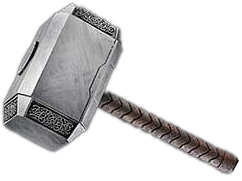Section2.4Cup product
Motivation: if \(k\) is a field \begin{align*} H^*(X\times X; k) &\cong (H_*(X\times X; k))^*\\ &\cong (H_*(X; k)\otimes H_*(X; k))^*\\ &\cong H^*(X; k)\otimes H^*(X; k) \end{align*}
Lemma2.4.2
\[d(a\smile b) = da\smile b + (-1)^{|a|} a\smile db.\]Proof
Corollary2.4.3
There is a well-defined cup product \begin{gather*} H^i(X) \times H^j(X) \to H^{i+j}(X),\\ [a] \times [b] \mapsto [a\smile b]. \end{gather*}Proof
Proposition2.4.4Properties of \(\smile\)
Let \(\alpha,\beta,\gamma \in H^*(X)\) then- (Associative) \((\alpha\smile \beta)\smile \gamma = \alpha \smile (\beta \smile \gamma)\).
- (Graded commutative) \(a \smile b = (-1)^{|\alpha||\beta|}\beta \smile \alpha\).
- (Identity) There is a class \(1 \in H^0(X)\) such that \(1\smile \alpha = \alpha \smile 1 = \alpha\) for all \(\alpha \in H^*(X)\).
- (Functorial) If \(f \colon X \to Y\), \(f^*(\alpha\smile \beta) = f^*(\alpha) \smile f^*(\beta)\).
Proof
Subsection2.4.1Digression: De Rahm Cohomology
Let \(M\) be a smooth manifold and \(\omega\in \Omega^k(M)\). If \(\sigma\colon\Delta^k \to M\) is a smooth we define \(\omega(\sigma) = \int_\sigma \omega\). Stokes' theorem then gives us that \(d\omega (\sigma) = \omega (d\sigma)\). Where on the left \(d\colon \Omega^k(M) \to \Omega^{k+1}(M)\) is the differential map and on the right \(d\) is the boundary map in the sense of (smooth) singular chains. I.e. the two \(d\)'s are dual to each other on \(C_*^{\text{smooth}}(M)\).
Theorem2.4.5de Rahm
\[H_k(\Omega^*(M), d) \cong H^k(M; \RR).\] Under this correspondence \[[\omega] \smile [\nu] = [\omega \wedge \nu].\]Example2.4.6
- \(H^*(S^n) = \langle 1, X_n\rangle\) where \(\langle X_n\rangle = H^n(S^n)\) and we have \begin{align*} 1\smile X_n &= X_n,\\ X_n\smile 1 &= X_n,\\ 1\smile 1 &= 1,\\ X_n\smile X_n &= 0 \in H^{2n}(S^n) = 0. \end{align*}
- For arbitrary \(X,Y\) \[C_*(X\amalg Y) \cong C_*(X) \oplus C_*(Y)\] which implies \[C^*(X\amalg Y) \cong C^*(X) \oplus C_*(Y)\] \[\implies H^*(X\amalg Y) \cong H^*(X) \oplus H_*(Y)\text{ as rings}\] with \[ (\alpha_1 \oplus \alpha_2) \smile (\beta_1 \oplus \beta2) = (\alpha_1 \smile \beta_1)\oplus (\alpha_2 \smile \beta_2).\]
- Considering \(X\vee Y\) we have a map \(p\colon X\amalg Y \to X \vee Y\) and so Mayer-Vietoris for \(X \vee Y\) gives \[ \cdots \to H^*(X\vee Y) \xrightarrow{p^*} H^*(X)\oplus H^*(Y) \xrightarrow{i^*} H^*(\text{pt}) \to \cdots\] Now assuming \(X\) and \(Y\) are path connected \(p^*\) is injective and an isomorphism in grading \(\gt 0\). In grading 0 we have \[H^0(X \vee Y) \to H^0(X) \oplus H^0(Y) \to H^0(\text{pt})\] with \(1 \mapsto 1\oplus 1\) and \(a\oplus b \mapsto a-b\). And so as a ring we have \[ H^*(X\vee Y) \cong \ker i^* \subset H^*(X)\oplus H^*(Y)\] where elements in grading \(\gt 0\) look like \((\alpha,\beta)\) and in grading 0 look like \((n,n)\in \ZZ \times \ZZ\).
- \(S^2 \vee S^4\), \(H^*(S^2\vee S^4) = \langle 1, X_2, X_4\rangle\) with \(X_2^2 = 0\) since \(X_2^2 = 0\) in \(H^*(S^2)\).
Subsection2.4.2Exterior Product
Let \(\pi_1 \colon X\times Y \to X\) and \(\pi_2 \colon X \times Y \to Y\).
Definition2.4.7Exterior product
If \(\alpha \in H^i(X)\), \(\beta\in H^j(X)\) then their exterior product is \(\alpha\times \beta = \pi_1^*(\alpha) \smile \pi_2^*(\beta) \in H^{i+j}(X\times Y)\).Proposition2.4.8
- \(\alpha\smile \beta = \Delta^*(\alpha\times \beta)\) where \(\Delta\colon X \to X\times X\) is the diagonal map.
- \((\alpha\times\beta)\smile (\alpha' \times \beta') = (-1)^{|\beta||\alpha'|}(\alpha \smile \alpha')\times(\beta \smile \beta').\)
